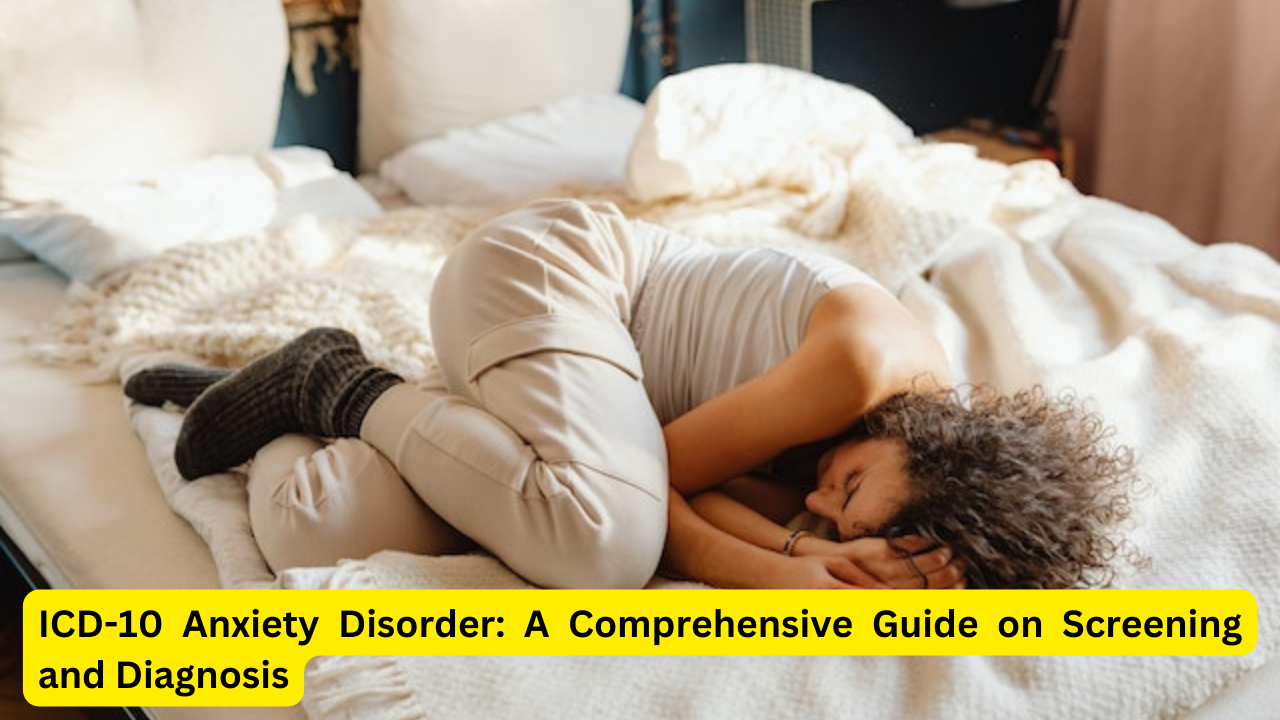ICD 10 Anxiety Disorder A Comprehensive Guide on Screening and Diagnosis

ICD 10 Anxiety Disorder A Comprehensive Guide on Screening and Diagnosis. In the realm of mental health, anxiety disorders are a significant concern, particularly following mild traumatic brain injuries (mTBI). These disorders can exacerbate postconcussive symptoms and impact overall functionality. Understanding the ICD-10 Anxiety Disorder classification and its diagnostic accuracy is crucial for effective treatment and management.
Anxiety disorders, as classified in the ICD-10 (International Classification of Diseases, 10th Revision), encompass a broad spectrum of conditions that significantly impact individuals’ daily lives. These disorders include Generalized Anxiety Disorder (GAD), characterized by persistent and excessive worry about various aspects of life; Panic Disorder, marked by recurrent and unexpected panic attacks; Social Phobia, involving intense fear of social interactions; and Specific Phobias, which are extreme fears related to specific objects or situations.
Proper identification and management of these disorders are crucial, especially following mild traumatic brain injuries (mTBI), where anxiety and other mental health conditions can be exacerbated. Early and accurate screening can greatly improve treatment outcomes by addressing these conditions before they lead to more severe and persistent symptoms.
Recent studies highlight the importance of effective screening tools such as the Patient Health Questionnaire–9 (PHQ-9), Generalized Anxiety Disorder–7 (GAD-7), and Primary Care PTSD Screen for DSM-5 (PC-PTSD-5) in diagnosing mental health disorders in individuals with mTBI. These tools have shown strong diagnostic accuracy, with high sensitivity and specificity rates, indicating their effectiveness in identifying conditions like depression, anxiety, and PTSD.
However, the presence of persistent postconcussion symptoms (PPCS) can impact the accuracy of these screenings, often reducing their effectiveness and highlighting the need for further research to refine these tools and confirm optimal cutoffs. By enhancing our understanding and application of these screening methods, healthcare professionals can better address and manage mental health challenges in individuals recovering from mTBI.
Understanding ICD-10 Anxiety Disorders
The ICD-10 (International Classification of Diseases, 10th Revision) provides a framework for diagnosing various mental health conditions, including anxiety disorders. According to ICD-10, anxiety disorders include a range of conditions characterized by excessive worry, fear, or anxiety that disrupts daily life.
Key Anxiety Disorders in ICD-10
- Generalized Anxiety Disorder (GAD): Chronic and excessive anxiety about various aspects of life.
- Panic Disorder: Recurrent and unexpected panic attacks.
- Social Phobia: Intense fear of social situations.
- Specific Phobias: Extreme fear of specific objects or situations.
The Importance of Accurate Screening
Accurate screening for anxiety disorders in individuals with mTBI is critical for effective treatment. Early detection can significantly improve clinical outcomes, reducing the risk of persistent symptoms and disability.
Screening Tools: PHQ-9, GAD-7, and PC-PTSD-5
Patient Health Questionnaire–9 (PHQ-9), Generalized Anxiety Disorder–7 (GAD-7), and Primary Care PTSD Screen for DSM-5 (PC-PTSD-5) are prominent tools used in screening mental health disorders.
Patient Health Questionnaire–9 (PHQ-9)
The PHQ-9 is a widely used tool for diagnosing depression and assessing its severity. It consists of nine questions that address the frequency of depressive symptoms over the past two weeks.
Generalized Anxiety Disorder–7 (GAD-7)
The GAD-7 is specifically designed to assess the severity of generalized anxiety disorder. It includes seven questions focusing on the frequency of anxiety symptoms over the past two weeks.
Primary Care PTSD Screen for DSM-5 (PC-PTSD-5)
The PC-PTSD-5 is used to screen for post-traumatic stress disorder (PTSD). It aligns with the DSM-5 criteria and helps in identifying individuals who might be experiencing PTSD symptoms.
Diagnostic Accuracy of Screening Tools
A study aimed at evaluating the diagnostic accuracy of these screening tools for mTBI patients revealed the following:
Methodology and Findings
Design and Setting
This diagnostic study was a secondary analysis of a cluster randomized clinical trial involving adults with mTBI. Participants completed online self-report questionnaires (PHQ-9, GAD-7, and PC-PTSD-5) 12 weeks after their injury. These results were compared with a structured psychodiagnostic interview conducted via videoconference.
Participants
A total of 537 adults with mTBI were recruited between February 1, 2021, and October 25, 2022. The study included 499 participants (55.7% female) with a mean age of 38.8 years.
Diagnostic Accuracy
Each screening tool demonstrated strong diagnostic accuracy:
- PHQ-9: Effective in identifying depressive symptoms.
- GAD-7: Slightly more accurate in detecting anxiety disorders compared to PC-PTSD-5.
- PC-PTSD-5: Adequate for PTSD detection, though GAD-7 showed slightly better performance.
Performance Metrics
- Area Under the Curve (AUC): All tools showed an AUC of ≥0.80, indicating strong diagnostic performance.
- Sensitivity and Specificity: The sensitivity ranged from 0.55 to 0.94, and specificity ranged from 0.64 to 0.94.
Impact of Persistent Postconcussion Symptoms (PPCS)
The presence of PPCS significantly impacted the accuracy of these screening tools. For patients with PPCS:
- AUC: Slightly lower compared to those without PPCS.
- Specificity: Showed a notable decrease.
- Prevalence of Mental Health Disorders: The prevalence of at least one mental health disorder was 3 to 5 times higher in patients with PPCS.
Optimal Cutoffs for Screening Tools
PHQ-9
An optimal cutoff score on the PHQ-9 was identified as 5 or more symptoms experienced on more than half of the days.
GAD-7
For the GAD-7, a total score of at least 7 was found to be effective for detecting generalized anxiety disorder.
Conclusions and Relevance
The study concludes that the PHQ-9, GAD-7, and PC-PTSD-5 are effective tools for screening mental health disorders in patients with mTBI. The accuracy of these tools underscores their utility in clinical settings. Future research should focus on confirming these optimal test cutoffs and exploring further refinements in diagnostic practices.
Future Directions
Ongoing research should aim to:
- Corroborate Optimal Cutoffs: Validate the cutoffs identified in various populations.
- Enhance Diagnostic Tools: Improve the specificity and sensitivity of existing tools.
- Investigate Long-Term Outcomes: Examine how early diagnosis impacts long-term recovery and mental health.




